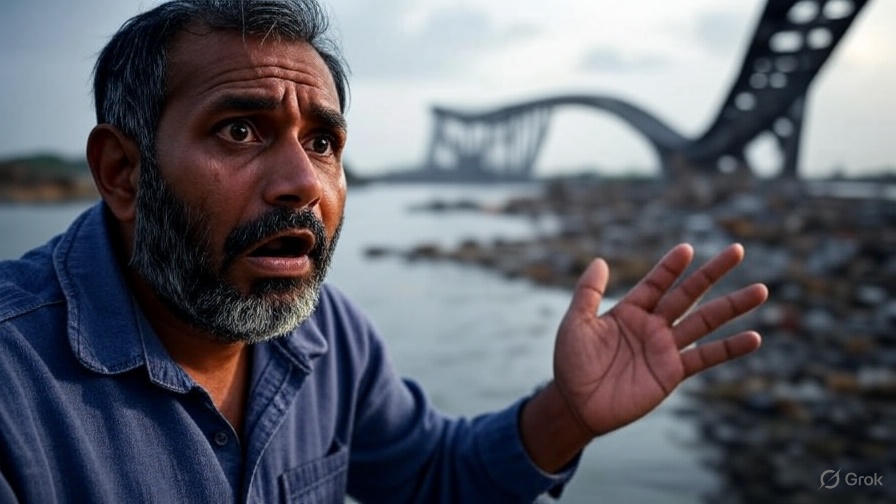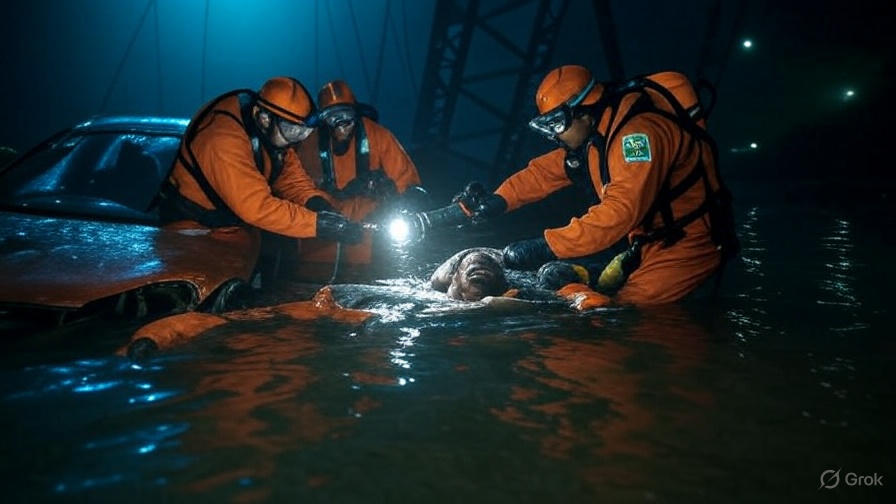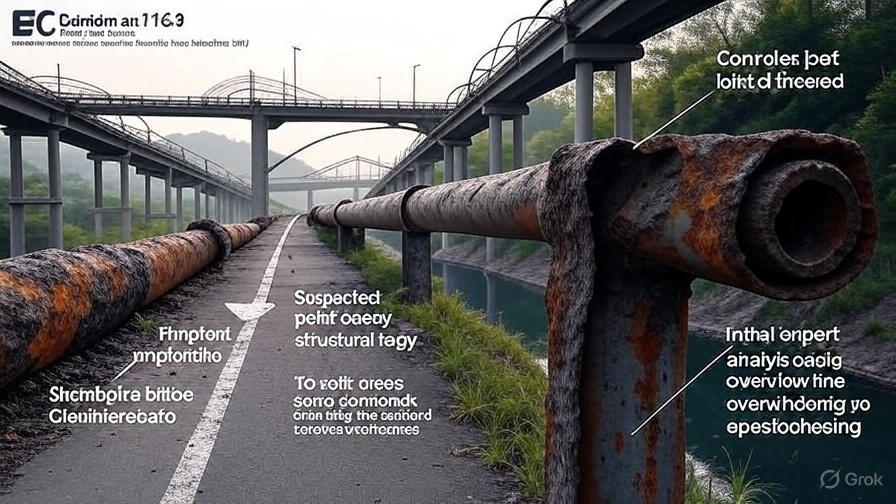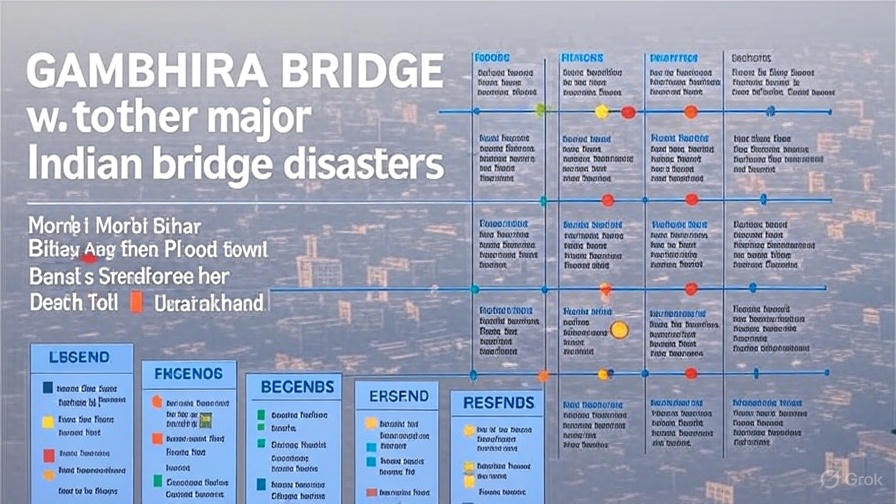
The Gambhira Bridge collapse near Vadodara, Gujarat, on July 8, 2025, stands as one of India’s most devastating infrastructure tragedies in recent years. This catastrophic failure—captured in horrifying viral videos showing vehicles plunging one after another into the Machchhu River—claimed at least 9 lives, injured dozens, and left a nation grappling with urgent questions about accountability, safety, and the true cost of neglected infrastructure. The collapse of the Gambhira Bridge isn’t just a local disaster; it’s a national symbol of systemic failure demanding answers.
Horror Unfolds: Minutes That Shattered Lives
Eyewitnesses described scenes of unimaginable terror. Fisherman Ramesh Patel, who was near the Gambhira Bridge, recounted to NDTV: “I heard a deafening crack, like thunder. Then, the bridge just… folded. Cars, bikes, people—they fell into the river one after another. It was over in seconds.” The bridge, a critical link for locals and travelers between Vadodara and Halol, gave way during evening rush hour. Initial reports suggest 30-40 vehicles were on the structure when it failed. Rescue teams, including NDRF divers, worked through the night in treacherous conditions, battling strong currents to pull survivors from mangled vehicles and recover bodies. The Gambhira Bridge became a tomb in moments.
Immediate Fallout: Rescue, Response, and Rising Anger
The Gujarat government announced compensation of ₹4 lakh for families of the deceased and free medical treatment for the injured. However, grief quickly turned to outrage. Questions mounted:
- Why was the Gambhira Bridge, reportedly just over 40 years old and recently inspected, open to heavy traffic?
- Were warnings about structural weaknesses ignored?
- Did recent monsoon rains play a role, or was this a deeper failure?
Opposition leaders seized on the tragedy. Congress President Mallikarjun Kharge called it “criminal negligence, not an act of God,” directly challenging the state’s BJP administration. The Gambhira Bridge collapse swiftly became a political flashpoint, symbolizing alleged governance failures.

Probing the Cause: Neglect, Nature, or Corruption?
Investigations are ongoing, but early theories point to multiple factors:
- Structural Fatigue & Poor Maintenance: Experts cited by The Indian Express suggest decades of wear, inadequate repairs, and failure to upgrade aging components doomed the Gambhira Bridge. Corrosion in critical support structures, often invisible without rigorous testing, is a prime suspect.
- Monsoon Stress: Heavy, unseasonal July rains saturated the riverbanks and increased water pressure on the piers. The Hindustan Times reported concerns that scouring (erosion of foundation soil) may have destabilized the Gambhira Bridge’s foundations.
- Overloading & Traffic Mismanagement: Despite weight restrictions, locals reported frequent heavy vehicle movement. Was enforcement lax?
- Quality & Accountability Gaps: Past bridge audits reveal systemic issues: substandard materials, flawed designs, and insufficient oversight plague India’s infrastructure. Was the Gambhira Bridge a victim of this pattern?
The Gujarat government has formed a Special Investigation Team (SIT). However, history breeds skepticism. Past probes into similar disasters often yielded delayed reports and muted accountability.

Beyond Gambhira: A Grisly Pattern of Collapse
Tragically, the Gambhira Bridge isn’t an isolated incident. It’s part of a horrifying trend:
- October 2022: Morbi Cable Bridge, Gujarat (135 dead)
- 2023: Multiple smaller bridge failures in Bihar, Himachal Pradesh
- June 2025: A pedestrian bridge collapse in Uttarakhand
Each disaster follows a familiar script: aging infrastructure, overlooked warnings, heavy rain or traffic, then collapse. The Gambhira Bridge collapse reinforces that lessons from Morbi and elsewhere remain unlearned. Explore our analysis of India’s 10 most dangerous infrastructure failures to understand the recurring risks.

The Deeper Crisis: India’s Crumbling Backbone
The Gambhira Bridge collapse exposes fatal flaws in India’s infrastructure management:
- Reactive, Not Proactive Maintenance: Bridges are repaired after failure becomes obvious, not through preventative, tech-driven monitoring. The Gambhira Bridge reportedly had visual inspections, but were advanced techniques like sonar scanning used?
- Underfunded Upgrades: Budgets prioritize shiny new projects over maintaining existing, aging assets like the Gambhira Bridge.
- Lax Enforcement & Corruption: Weight limit violations are rampant; inspection reports might be fudged. Did the Gambhira Bridge suffer from this?
- Climate Change Vulnerability: Increased intensity of monsoons stresses infrastructure designed for outdated weather patterns. The Gambhira Bridge may be a grim climate casualty.
Learn how AI-powered structural health monitoring could prevent future tragedies like Gambhira.
Demand for Accountability: Beyond Compensation
While compensation is essential, victims’ families and citizens demand more:
- Transparent SIT Findings: The Gambhira Bridge probe must name responsible parties—contractors, engineers, officials—and recommend prosecutions.
- Nationwide Safety Audit: Every bridge over 20 years old needs urgent, technologically advanced assessment. Results must be public.
- Strict Enforcement: Implement and ruthlessly enforce weight limits, using AI-enabled cameras. Mandate third-party audits.
- Modernization Fund: Dedicate significant resources specifically for upgrading existing infrastructure, including structures like the Gambhira Bridge before they fail.
- Policy Overhaul: Enact stricter laws with criminal liability for negligence leading to collapse. Revisit the National Bridge Inspection Standards.
A Legacy of Loss, A Demand for Change
The Gambhira Bridge collapse is a scar on Gujarat and India’s conscience. Nine lives were extinguished on a structure meant to connect communities, not bury them. While the SIT investigates, the Gambhira Bridge stands—or rather, lies—as an undeniable indictment. It screams of maintenance ignored, warnings unheeded, and accountability deferred.
The true memorial for the victims of the Gambhira Bridge disaster won’t be built from concrete and steel. It will be forged in relentless public pressure, stringent policy reform, and a fundamental shift in how India values the safety of its citizens over political expediency or bureaucratic inertia. We cannot rebuild the Gambhira Bridge on the same broken foundations of negligence. The time for decisive, nationwide action to prevent the next Gambhira Bridge tragedy is now. The ghosts of the Machchhu River demand nothing less.
